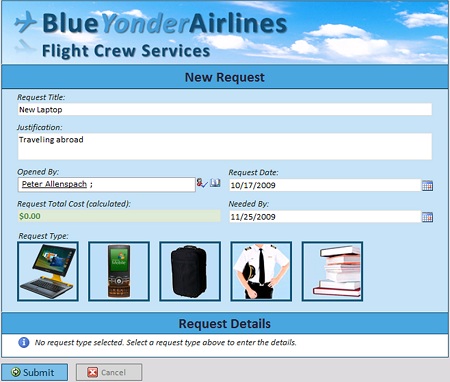Office and SharePoint 2010 Highlights from SharePoint Conference
SharePoint Conference was a very busy time for us. We were finally able to pull back the curtain on many of the capability areas of 2010, and for a lot of folks, this was the first opportunity to see what all the excitement is about. There is a lot of buzz about Office and SharePoint 2010, but there are some important developer capabilities that are worth paying attention to. I wanted to take a moment to highlight some of the more interesting "sleeper" areas that we discussed in detail at the show, and point you at more information on those.
Visual Basic for Applications (VBA)
Speculation regarding the future of VBA has been a topic of conversation for quite a while. This is a sensitive area for us – there are millions upon millions of VBA coders in the world. A quick analysis of file types on Google search (where we can distinctly identify the differences between macro-enabled and non-macro-enabled documents) shows us that ~4% of Open XML documents for Excel indexed on Google are Macro enabled. Multiply that out to the billions of Office documents that exist, and you get the idea of the value that VBA has to the Office user community.

To cast aside any doubt – VBA is supported in Office 2010. In fact it has been upgraded to support the new, native 64-bit client version of Office. VBA remains a powerful tool in automating Office, and Alt-F11 remains the coding experience of choice for many people. To cast aside any speculation – we love VBA. We encourage you to use VBA, and VBA is a viable and important part of our product. John Durant has an excellent post – "Why VBA still makes sense." It is very much worth reading.
InfoPath 2010 and InfoPath Forms Services
Forms capability in Office and SharePoint is maturing rapidly. With the inclusion of BCS in SharePoint 2010 and Office 2010, InfoPath becomes even more powerful as a tool for aggregating, presenting and gathering information. Why? – People are now discovering how easy it is to bind BCS entities to a SharePoint list, and then present that list data to users in a rich InfoPath form. Because InfoPath does a great job of making complex data interaction simple for end users, it is becoming a critical component of LOB solutions managed in the SharePoint environment. Surfacing InfoPath solutions via the browser, InfoPath mobile forms, through Outlook, SharePoint Workspace or other interfaces makes the rich InfoPath experience portable and flexible. People on the floor certainly responded positively; InfoPath was a smashing success. Visit the InfoPath team blog to read about some of the solutions they were previewing. Below is an excerpt from the post:
Demo 3: Office Business Applications: Procurement scenario
In this final demo, Peter and Bojana showed the audience how InfoPath helps IT departments develop full Office Business Applications on the SharePoint platform. They used a procurement scenario to demo these capabilities. In this scenario, an employee submits a request to purchase a new laptop computer. The solution used an InfoPath form that connects to a vendor database, that brings in details about the goods you can purchase.
Procurement Form:

Access 2010 and Access Services
Access 2010 and Access Services take a very powerful product and make it stronger. Imagine the ability to design a tracking application in Access, and then the ability to surface that Access application via SharePoint and the browser. A lot of people are observing the type of capability enabled by Access Services, and like this blogger, finding that Access 2010 is worth a look.
At about 9:00 of the embedded video another great new feature of Access 2010 is highlighted – a visual Macro designer.
Business Connectivity Services (BCS)
SharePoint veterans will appreciate BCS as the "read/write implementation of BDC." For the rest of us, BCS is a way to define, store and manage line of business connectivity through SharePoint. BCS is accompanied by a client-side runtime that ALSO allows you to push and cache the results of the BCS connections to the client. This makes it much easier to surface LOB data in Office client applications. The BCS team blog can get you up to speed quickly on how BCS works and describe some of the scenarios that are aided by BCS.
Word Services of SharePoint 2010
Probably my favorite feature of SharePoint 2010 is what we call Word Services. In the past, we've seen many developers who install Office on a server and write VBA for Office to automate things like Open/Save operations. With SharePoint 2010, the introduction of Word Services gets us out of jail on that… instead of scriping the client app, we now offer essentially a "file save as" on the server side, without requiring the client user interface. This makes for a much more robust environment for doing batch document conversions. All file formats written in the client version are supported, and because of this, we now offer bulk conversion to PDF in SharePoint 2010. The Word Team blog has plenty of great details on Word Services. When combined with the Open XML SDK, this new capability opens endless possibilities for processing documents.
There is so much to discuss for Office 2010. Over the next two or three months, we'll drill into the details on several areas. The next post will drill on the Office Environment Assessment tools and the Application Compatibility Program we announced last week.
